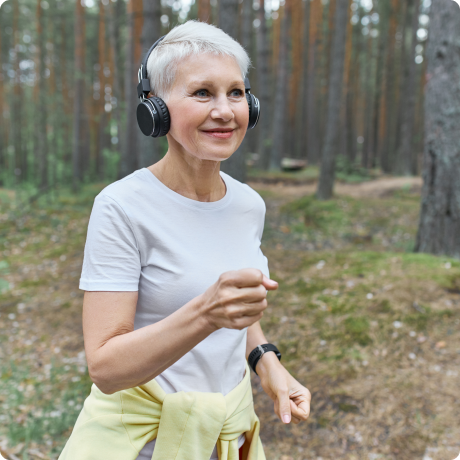Osteoporosis is a condition characterized by weakened bones that are more prone to fracture. In people with osteoporosis, bone density and bone quality are significantly reduced, leading to bones that are fragile and break easily even from minor falls, bumps, or normal stresses like bending over or coughing. It is a major public health concern due to its prevalence and the severe impact fractures can have on an individual’s quality of life.
The most common fractures for people who have osteoporosis are in the spine, hip, wrist, and forearm.1


Around the world, one in three women and one in five men over the age of fifty will suffer a broken bone due to osteoporosis.2-3
Osteoporosis is a widespread condition that affects millions of people worldwide. In Europe there are approximately 32 million people aged 50+ affected; 25.5 million women and 6.5 million men. Worldwide, osteoporosis causes more than 8.9 million fractures annually, resulting in an osteoporotic fracture every 3 seconds.4
The risk increases with age, and a 50-year-old woman has a 46% lifetime risk of experiencing an osteoporosis-related fracture.
Early osteoporosis is not usually diagnosed and remains asymptomatic. It does not become clinically evident until fractures occur. Symptoms may include:
Develops due to the weakening of spinal bones, leading to a curvature of the spine and a bent forward stance.
Occurs as vertebrae (spinal bones) become compressed or fractured, leading to a decrease in overall stature.
Results from fractures or collapse of the spinal vertebrae, which can cause acute or chronic discomfort.
Happen with minimal or no trauma, reflecting the bones’ increased fragility and susceptibility to breakage.
Early osteoporosis is not usually diagnosed and remains asymptomatic. It does not become clinically evident until fractures occur. Symptoms may include:
Develops due to the weakening of spinal bones, leading to a curvature of the spine and a bent forward stance.
Occurs as vertebrae (spinal bones) become compressed or fractured, leading to a decrease in overall stature.
Results from fractures or collapse of the spinal vertebrae, which can cause acute or chronic discomfort.
Happen with minimal or no trauma, reflecting the bones’ increased fragility and susceptibility to breakage.
Early osteoporosis is not usually diagnosed and remains asymptomatic. It does not become clinically evident until fractures occur. Symptoms may include:
Develops due to the weakening of spinal bones, leading to a curvature of the spine and a bent forward stance.
Occurs as vertebrae (spinal bones) become compressed or fractured, leading to a decrease in overall stature.
Results from fractures or collapse of the spinal vertebrae, which can cause acute or chronic discomfort.
Happen with minimal or no trauma, reflecting the bones’ increased fragility and susceptibility to breakage.
Early osteoporosis is not usually diagnosed and remains asymptomatic. It does not become clinically evident until fractures occur. Symptoms may include:
Develops due to the weakening of spinal bones, leading to a curvature of the spine and a bent forward stance.
Occurs as vertebrae (spinal bones) become compressed or fractured, leading to a decrease in overall stature.
Results from fractures or collapse of the spinal vertebrae, which can cause acute or chronic discomfort.
Happen with minimal or no trauma, reflecting the bones’ increased fragility and susceptibility to breakage.
Early osteoporosis is not usually diagnosed and remains asymptomatic. It does not become clinically evident until fractures occur. Symptoms may include:
Develops due to the weakening of spinal bones, leading to a curvature of the spine and a bent forward stance.
Occurs as vertebrae (spinal bones) become compressed or fractured, leading to a decrease in overall stature.
Results from fractures or collapse of the spinal vertebrae, which can cause acute or chronic discomfort.
Happen with minimal or no trauma, reflecting the bones’ increased fragility and susceptibility to breakage.

Osteoporosis is caused by an imbalance in the bone remodeling process, where bone tissue is broken down faster than it is replaced. This can be due to several factors, including:
1. WHO Scientific Group on the Prevention and Management of Osteoporosis (2000 : Geneva, Switzerland). (2003). Prevention and management of osteoporosis : report of a WHO scientific group. World Health Organization. https://apps.who.int/iris/handle/10665/42841
2. https://www.osteoporosis.foundation/health-professionals/fragility-fractures/epidemiology
3. https://www.osteoporosis.foundation/patients/about-osteoporosis
4. Johnell, O. and J.A. Kanis, An estimate of the worldwide prevalence and disability associated with osteoporotic fractures. Osteoporos Int, 2006. 17(12): p. 1726-33
5. https://www.osteoporosis.foundation/patients/about-osteoporosis/risk-factors